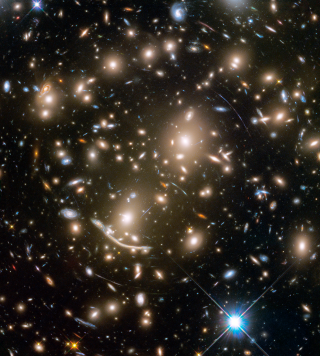Bibcode
Aguerri, J. A. L.; Méndez-Abreu, J.; Corsini, E. M.
Bibliographical reference
Astronomy and Astrophysics, Volume 495, Issue 2, 2009, pp.491-504
Advertised on:
2
2009
Journal
Citations
311
Refereed citations
278
Description
Context: Bars are very common in the centre of the disc galaxies, and
they drive the evolution of their structure. The state-of-the-art
imaging and redshift surveys of galaxies allow us to study the
relationships between the properties of the bars and those of their
hosts in statistically significant samples. Aims: A
volume-limited sample of 2106 disc galaxies was studied to derive the
bar fraction, length, and strength as a function of the morphology,
size, local galaxy density, light concentration, and colour of the host
galaxy. The sample galaxies were selected to not be strongly
disturbed/interacting. Methods: The bar and galaxy properties were
obtained by analysing the r-band images of the sample galaxies available
in the Sloan Digital Sky Survey Data Release 5. Results: The bars
were detected using the ellipse fitting method and Fourier analysis
method. They were tested and calibrated with extensive simulations on
artificial images. The ellipse fitting method was found to be more
efficient in detecting bars in spiral galaxies. The fraction of barred
galaxies turned out to be 45%. A bar was found in 29% of the lenticular
galaxies, in 55% and 54% of the early- and late-type spirals,
respectively. The bar length (normalised by the galaxy size) of
late-type spirals is shorter than in early-type or lenticular ones. A
correlation between the bar length and galaxy size was found with longer
bars hosted by larger galaxies. The bars of the lenticular galaxies are
weaker than those in spirals. Moreover, the unimodal distribution of the
bar strength found for all the galaxy types argues against a quick
transition between the barred and unbarred statues. There is no
difference between the local galaxy density of barred and unbarred
galaxies. Besides, neither the length nor strength of the bars are
correlated with the local density of the galaxy neighbourhoods. In
contrast, a statistical significant difference between the central light
concentration and colour of barred and unbarred galaxies was found. Bars
are mostly located in less concentrated and bluer galaxies. Conclusions: These results indicate that the properties of bars are
strongly related to those of their host galaxies, but do not depend on
the local environment.
Related projects

Starbursts in Galaxies GEFE
Starsbursts play a key role in the cosmic evolution of galaxies, and thus in the star formation (SF) history of the universe, the production of metals, and the feedback coupling galaxies with the cosmic web. Extreme SF conditions prevail early on during the formation of the first stars and galaxies, therefore, the starburst phenomenon constitutes a
Casiana
Muñoz Tuñón

Galaxy Evolution in Clusters of Galaxies
Galaxies in the universe can be located in different environments, some of them are isolated or in low density regions and they are usually called field galaxies. The others can be located in galaxy associations, going from loose groups to clusters or even superclusters of galaxies. One of the foremost challenges of the modern Astrophysics is to
Jairo
Méndez Abreu